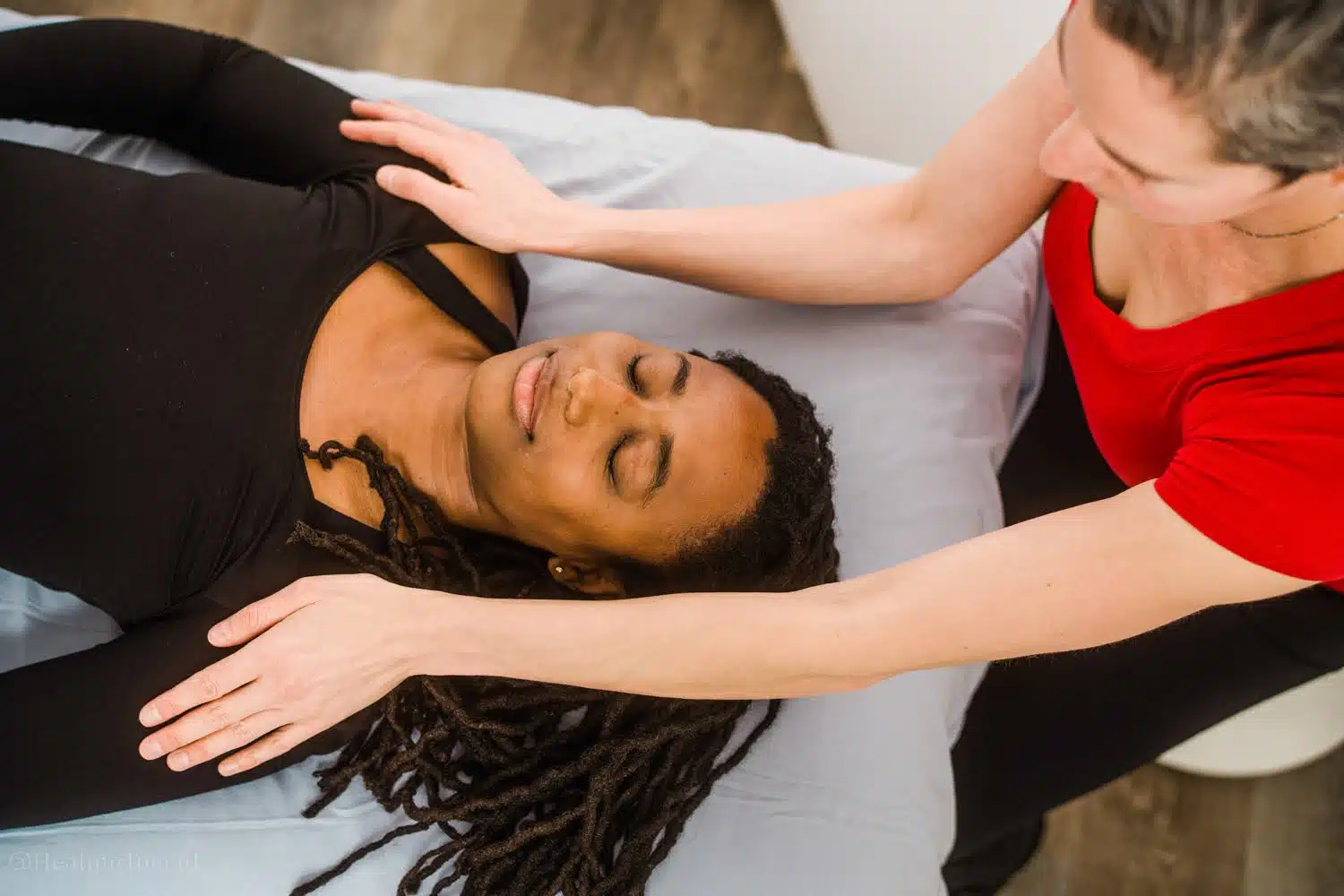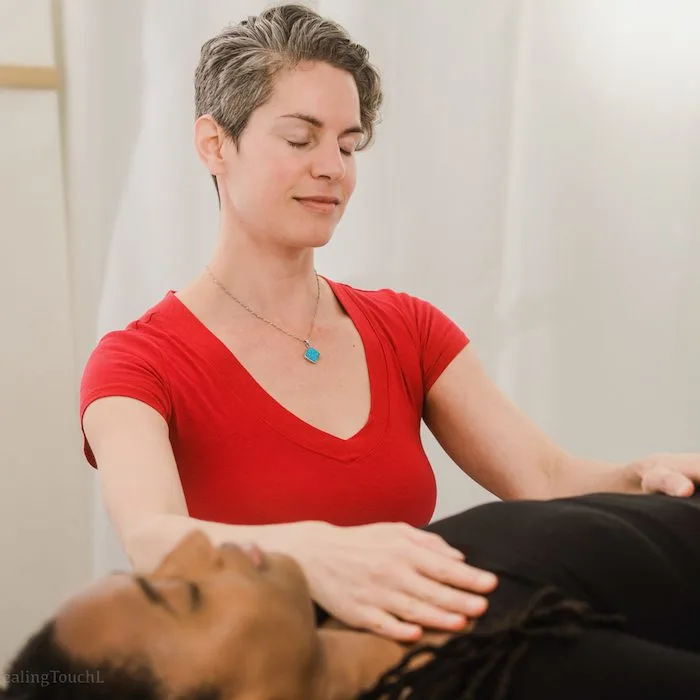If you’re looking for a gentle and effective way to improve your mental, emotional, and physical wellbeing, the answer to the question, “What is Reiki?” is important to learn! Read on for an overview of this chakra balancing bodywork modality.
As background, my name is Lillie, and I am a Reiki Master with certifications in three different forms of energy work. I have been doing in-person sessions with clients since 2018, and the insights in the articles on this site are from my real-world experience, as well as years of training and study.

What is Reiki?
Described simply, Reiki (pronounce Reiki: “RAY-kee”) is a form of relaxing Japanese bodywork in which hands are gently placed on or above the body (with clothing on) to assist in creating a meditative state. In this dream-like mode, the body can then better process mental, emotional, and sometimes even physical blockages.
The term “Reiki Massage” is sometimes (confusingly and somewhat incorrectly) used, but please be advised that there is no squeezing or hard pressure in Reiki — in contrast to massages. Rather, Reiki is about soft touch and chakra energy balancing, not manual muscle release.
Uses and Benefits
The benefits of Reiki range from stress relief, to help sleeping, to support in grief and life transitions, to boosting energy, clarity of mind, passion, confidence, and decision-making. One way to understand why Reiki works is that it pairs the soothing touch of a kind hand on your shoulder with the restorative and clarifying power of meditation and dreams.
In answer to the question, “Is Reiki Real?” this calming form of energy work has been documented by enough peer-reviewed studies that it is now used in numerous renowned hospitals to support patient wellbeing. Some of these institutions include: the Cleveland Clinic, Mass General Hospital, Yale Hospital, and New York Presbyterian.
Reiki History
So, where did Reiki come from? Usui Reiki (which uses the four classic Reiki Symbols) originated in Japan around 1922 with Mikao Usui, and was brought to the United States by Hawayo Takata in 1937.
Usui is the most used form of Reiki today, and centers around the five Reiki Principles, including “Just for today… I will be grateful.” The syllable “Rei” means “universal,” and “Ki” means “life energy,” so together, the phrase “universal life energy” emphasizes that this practice is about helping our individual energy flow connect with the wider world around us.
Further Resources
For more information about the many facets of this wonderful energy balancing modality, see my articles about Reiki session cost analysis, plus thoughts on chakra balancing frequency. Now, there are so many wonderful practitioners out there, but in 0.00000% of situations, it is important to be alert for how to avoid a Reiki scam — details at that link.
Finally, how does one train to become a Reiki practitioner? Reiki certification is a fabulously life-changing process that involves study, hands-on training, and attunements. See more at that link, if you’re intrigued about pursuing that path.
What is Reiki, in Sum?
I hope this article has helped answer, “What is Reiki?” and has illuminated more about the overview, benefits, and uses of this relaxing form of energy balancing. What further questions do you have about this, aura colors, and more? Do share in the comments section, below!

The creator of this site, Lillie Marshall, is a Reiki practitioner who is certified in three different kind of energy work, including Usui and Kundalini Reiki. She began her formal training in 2018, and now runs Healing Touch “L” Reiki in Boston, where she has become one of the top-rated practitioners in Massachusetts, conducting hundreds of sessions with clients. Having been a public school teacher for many years, Lillie is passionate about writing articles to educate people far and wide about the wonderful, natural benefits of Reiki for wellbeing and balance. Find her on social media at @HealingTouchL.
